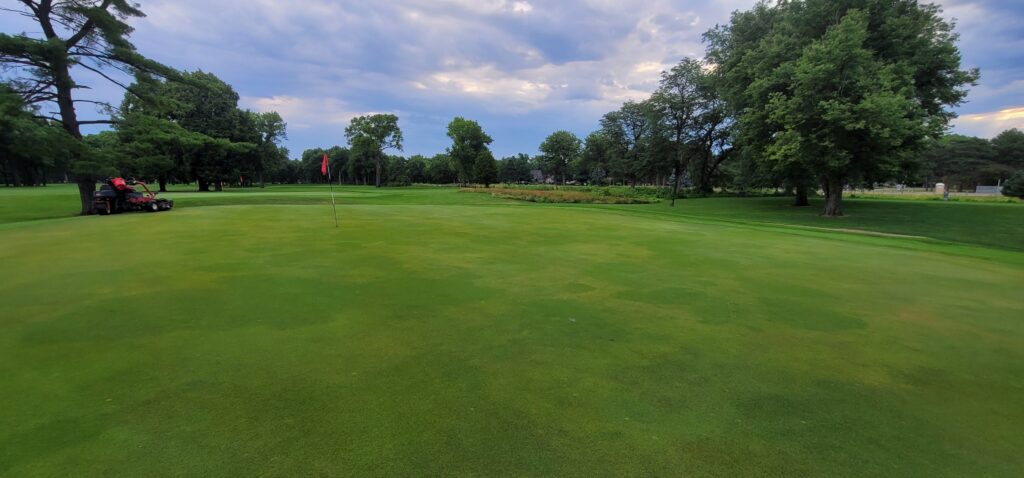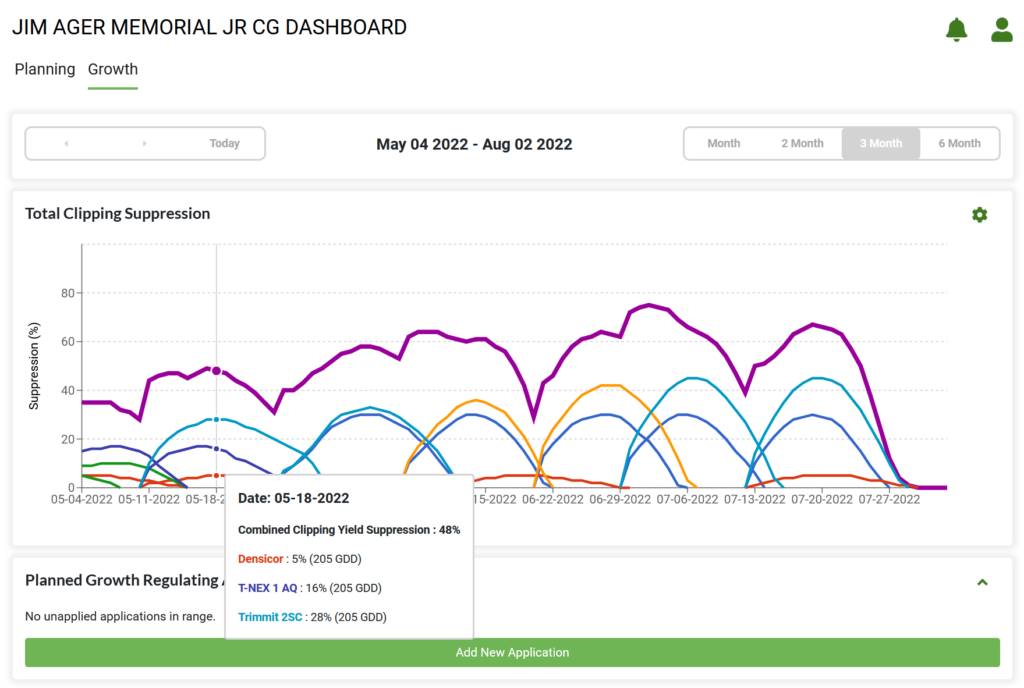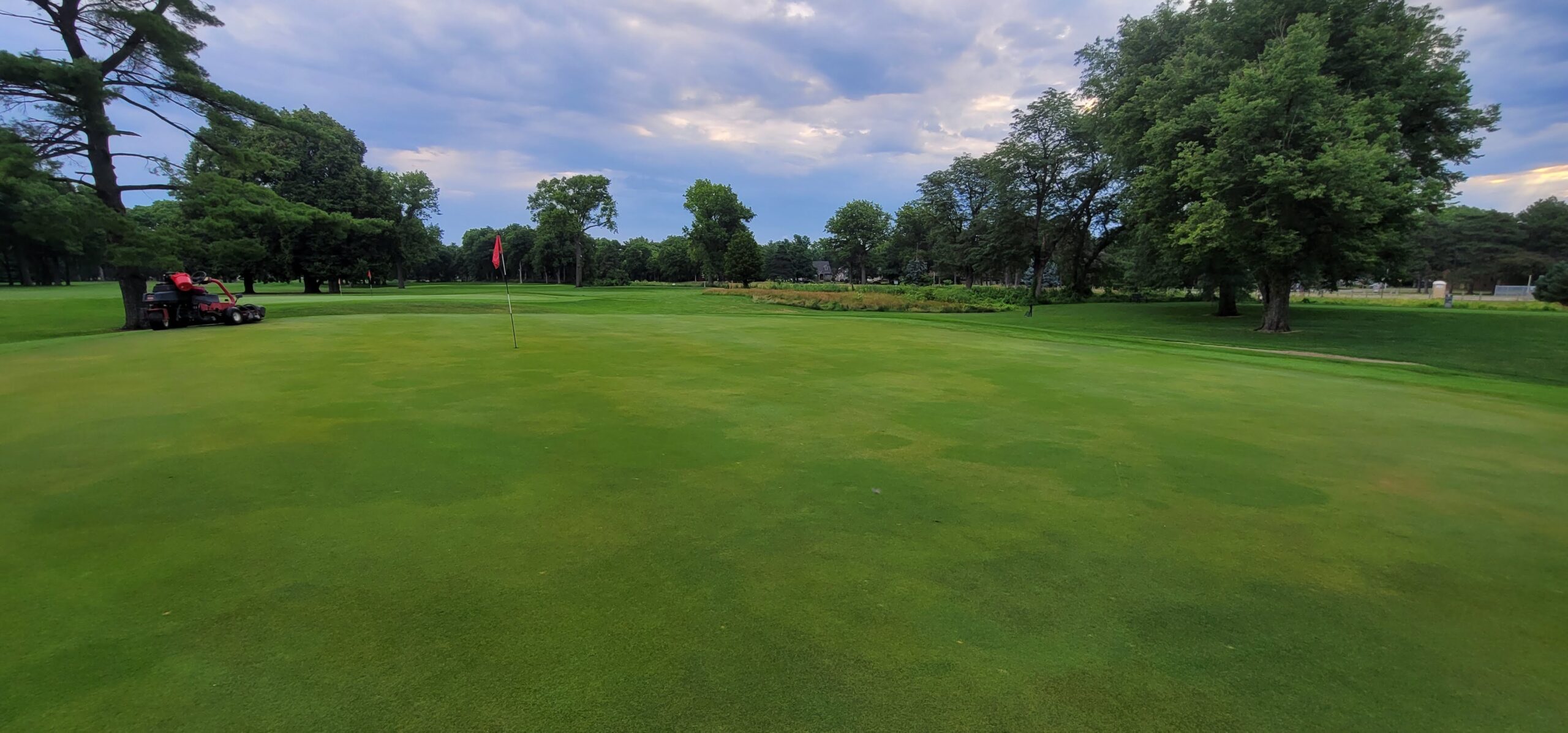It’s been hot and humid, and many golf course putting greens are growing rapidly. Plant growth regulator programs that were dialed-in during May and June appear to be non-existent during July. Growth rate is surging, green speeds are declining, and puffy conditions are starting to plague golf course superintendents. So, has the grass become resistant to PGRs?
Resistance to PGRs can be a real phenomenon. It occurs when a grass biotype that is more sensitive to a particular herbicide (a PGR in this case) than another biotype. The less sensitive biotype will then have a competitive advantage over the more sensitive biotype. For PGRs, sensitivity could be the degree of growth suppression, heat/cold tolerance, or direct toxicity to an active ingredient. Prolonged use of the same herbicide/PGR has the potential to shift the grass biotypes within population (putting green).

So, are the grasses becoming resistant to PGRs in July? Probably not because the PGRs generally work well again during the fall. A resistant population would continue to have minimal growth suppression following PGR apps during the fall and following spring.
Models Help Understand PGR Performance
We have been modeling PGR response for 15 years. Our GreenKeeper App has PGR and now DMI models for dozens of grass species and mowing height combinations. Some key findings have remained the same since 2007. First, the amount of growth suppression from a PGR is relative not absolute. Clipping volume is an absolute measure of growth. It is very intuitive and something I record every day to help schedule nitrogen and PGR applications. The greater the growth rate, the greater the clipping volume. Growth suppression is the relative amount of measured ClipVol from grass treated with PGRs compared to ClipVol of non-treated turf. Since most turf managers do not have a non-treated control, GreenKeeper uses our priority models to estimate what the growth rate would have been without a PGR application.

The screenshot above is from Jim Ager GC on July 18, 2022. The weather has been hot and humid and all the grasses are growing rapidly. The measured clipping volume was 1.24 quarts per 1,000 square feet and the total amount of suppression on that particular day was 63% (a combination of Trimmit 2SC, Anuew and Densicor DMI at 160 GDD). If PGRs were not applied, the theoretical clipping volume would have exceeded three quarts per thousand. For many PGRs, higher application rates increase the amount of growth suppression. Combining PGRs also increases suppression (see above and below figures). During periods of high growth rate, higher PGR application rates and combinations of PGRs may be required to achieve growth rate goals.

Soil microbes breakdown soil organic matter during hot and wet conditions. This releases nitrogen fertilizer which stimulates grass growth rate. I also hypothesize that growth rate increases following the summer equinox because the grass is trying to produce seed heads in June. This is an energy intensive process that naturally slows growth rate/ClipVol. This means that more growth suppression is needed during July and August to replicate growth rates during May and June. I traditionally mix class A and B PGRs to achieve higher levels of growth suppression at Ager GC (30-70% relative suppression) with lower amounts of suppression in spring and fall than summer.
Another key point from our 15 years of work is that PGR duration is directly related to temperature. As temperature increases, the duration of growth suppression wains. This is another reason that calendar-based re-application intervals fail during summer heat. I was unintentionally late on a mid-June PGR application because of work travel (see above figure). This let to a rapid decline in growth suppression and clipping volumes surged in late June. I repeated this experiment intentionally in late July and ClipVol measurements were above our goals for a week. PGR intervals need to be tightened up as temperatures increase.
The ideal timing for follow up PGR applications should occur as growth suppression starts to rapidly declines. This is typically 130% of the GDDs required to reach peak suppression. For example, Primo MAXX (trinexapac-ethyl) has peak suppression at approximately 150GDD so and ideal re-application interval would be approximately 200GDD. The view in Program Build above shows how the old app wains as the new app intensifies suppression. The net result is consistent suppression.
Use GreenKeeper and Stop Guessing
We’ve coded our 15 years of modeling research into GreenKeeper (https://greenkeeperapp.com). The Growth view in Program Builder shows turf managers how various rates and combinations of PGRs and DMI fungicides will impact the relative growth rate of their turf. It uses past, forecast, and normal weather data from around the world to project PGR performance into the future. GreenKeeper also tracks ClipVol which helps our users estimate growth rate without PGRs. This is the only way to know how much suppression is really needed to hit growth and performance goals. Start your free trial at GreenKeeperApp.com and visualize your PGR program in unprecedented detail.

